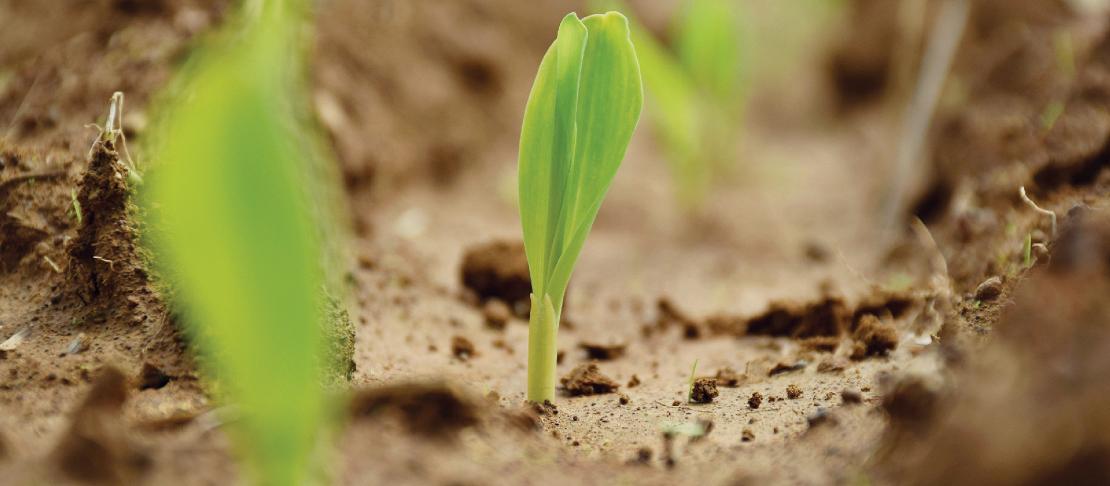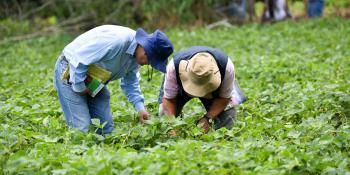Enhancing investment in soil health and carbon storage: Frontiers for linking finance and carbon accounting

This webinar and Hackathon was an opportunity to scale up finance for soil carbon by bringing together communities that usually don’t communicate (finance, soil carbon, and measurement). It was more than another technical or financial webinar on soil carbon; it's the frontier of system transformation.
Watch the recordings and view presentations below or check out the event resource site
Enhancing soil health can contribute to improving agricultural productivity as well as soil organic carbon (SOC) sequestration. UNFCCC’s Koronivia Joint Work on Agriculture, Sustainable Development Goal 15 and the Land Degradation Neutrality framework demonstrates the increasing attention of policymakers to the importance of SOC for land productivity and food security. In addition, the 4 per 1000 Initiative has been promoting a global partnership intending to facilitate efforts across multiple stakeholders to promote action at all levels to increase SOC stocks globally.
Despite the broad international attention, a large gap remains between the potential of SOC sequestration and implementation of practices on the ground. As the investment community seeks to improve its climate impacts, many organizations are asking how to best support the implementation of those practices. Diverse opportunities for public and private finance exist and are emerging. For example, the UNCCD set up the Land Degradation Neutrality (LDN) Fund as an “impact investment fund blending resources from the public, private and philanthropic sectors in support of achieving LDN through sustainable land management and land restoration projects undertaken by the private sector worldwide.”
Major constraints are the need for transparent, accurate, consistent and comparable methods for accounting changes in SOC stocks and net GHG emissions, notably through the use of new technologies, as well as the need to enable a standardized approach at low transaction costs. Promising approaches combine pragmatic and user-friendly tools with site-specific modeling and make use of geospatial data sources and blockchain technology.
Purpose
Webinar
The webinar's aim was to support investment-oriented actions promoting soil health and carbon storage by improving the accounting of soil carbon sequestration. We sought to answer the question: How can soil carbon accounting improve to support investment-oriented actions promoting soil health and carbon storage? The event brought together multilateral development banks, private banks, and other investors, donors, and implementing organizations with developers and providers of tools and project standards, to share experiences and develop solution pathways for enhanced investment and SOC accounting.
Over 1,000 individuals registered for the webinar and over 500 participated in the webinar.
Hackathon
The purpose of the Hackathon was to develop recommendations for soil carbon accounting approaches that match the needs of the finance community. This activity built on the webinar.
The Hackathon took place over two days. On Day 1, key resource people from the webinar event were invited to discuss novel accounting approaches with experts from the finance community. On Day 2, participants “hacked” or tackled four real-life soil carbon projects to develop methods.
Four active soil carbon projects that sought guidance on soil carbon accounting were "hacked" – from TNC, World Bank, and 4per1000 – demonstrating different aspects of soil carbon activities. Background information on the projects was available to the participants prior to Day 1. See here for project background information. Around 35 individuals participated in each day of the Hackathon
The webinar was open to the public and the Hackathon was by invitation only. Presentations for both events can be found below.
Agendas
Webinar session 10 September
Session 1 - The need for soil carbon accounting Objective: Identify needs of the finance community and issues in linking finance and soil carbon accounting |
Welcome and introduction – Ciniro Costa Jr., CCAFS Overview of agenda – Tim Mealey, Meridian Institute |
Keynote presentation: Investing in soil carbon sequestration: Overview of opportunities and challenges – Deborah Bossio, The Nature Conservancy |
Setting the scene:
|
Session 2 - Soil carbon accounting frontiers Objective: Learn from emerging experiences linking investment and soil carbon accounting |
Verra – development and management of standards for sustainable development and climate action goals. Stefan Jirka, Manager LandScale. |
Indigo – unlocking carbon markets through research and entrepreneurial community efforts. Dan Harburg, Director |
Dagan, Inc – estimating soil carbon sequestration using remote sensing. William Salas, President of Dagan, Inc |
Nori – blockchain-based two-sided marketplace to measure, verify and trade soil carbon sequestration. Aldyen Donnelly, Director of Carbon Economics |
Ecosystem Services Market Consortium (ESMC) - leading US and international NGO's, companies, and experts. ESMC quantifies and generates assets and credits for improved soil carbon, net GHG emissions and water quantity. Debbie Reed, Executive Director |
Carbon Farming Initiative - Emissions Reduction Fund – the Australian government scheme, including methods for crediting soil carbon eligible under a national target in line with the Paris Agreement, Beverley Henry, Institute for Future Environments-QUT |
Bayer: Climate Field View - Precision farming tool combined with remote sensing and sensors, Pamela M. Bachman, Digital Agriculture & Sustainability Lead, The Climate Corporation, a subsidiary of Bayer |
RECSOIL: Recarbonization of global soils, Ronald Vargas, Global Soil Carbon Partnership - FAO |
Closing remarks – Paul Luu, 4per1000 |
Hackathon 17 & 24 September
Day 1: Deep Dives on Emerging Accounting Options Objectives:
|
| Welcome and introduction – Nkulumo Zinyengere, World Bank |
Summary of webinar results – Ciniro Costa Jr, CCAFS Facilitator plan for “virtual table” deep dive discussions – Tim Mealey, Meridian Institute |
| Finance community needs – Chandra Shekhar Sinha, World Bank |
Deep dives into soil carbon accounting for investment needs Tables discuss and present emerging best accounting practices for each topic area and what is needed to make these useable by finance for carbon accounting: low cost, low uncertainty and reliable SOC accounting. Output:
Table 1 – Measurement (previously Remote-sensing, model-based, and activity-based groups) Table 2 – Accounting design group (previously accounting innovations and cross-cutting innovations groups) |
| Tables present their outputs |
| Closing remarks – Lini Wollenberg, CCAFS |
Day 2: The Hack - Developing an innovative soil carbon accounting approach Using case projects provided by TNC, 4per1000, and World Bank, participants with different expertise (agricultural practices, soil carbon accounting, private and public sector, and investments) were grouped into tables to develop a soil carbon accounting approach for reducing accounting costs and uncertainties to achieve investor needs. The output will inform TNC, 4per1000, and World Bank projects. A synthesis was produced. |
| Introduction – Facilitator, Tim Mealey |
| Synthesis from Day 1 (Finance Needs and Way Forward for MRV) - Ciniro Costa Jr. |
Participants apply soil C accounting methods on projects Outcome:
|
| Groups present their solution |
Participants discuss pros and cons of the “alternative” SOC accounting approach, including:
|
| Closing remarks – Lini Wollenberg, CCAFS |
Sponsoring organizations
This event is co-organized by CCAFS, The Nature Conservancy, 4 per 1000 Executive Secretariat, World Bank and the Meridian Institute.


